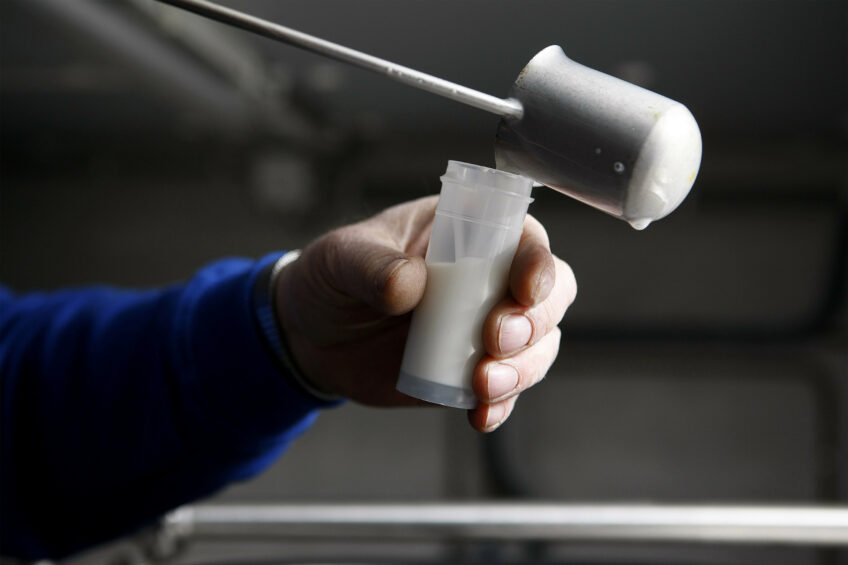A holistic approach to reducing TBC

The Total Bacterial Count (TBC) is one of the main reasons for reduced milk quality. Even in UHT milk, bacteria that are killed by heating may have produced enzymes before treatment, hence causing taste and milk quality failure.
The European Union (EU) has set a limit of the Total Bacterial Count (TBC) at 100,000 CFU/ml in a geometric mean over two months for milk delivered. However in many countries, there is a payment bonus for milk with a much lower TBC. One of the larger dairies in North Europe has recently reduced the payment border for best quality milk to be lower than 15,000 CFU/ml. Our own experience is that if the milk from the cows is clean, and the milking system and tank is properly washed, then the TBC is always under 5,000 CFU/ml. For a TBC around 10-15,000 CFU/ml you will often be able to find a biofilm from bacterial growth and clots of milk in different places such as around the opening to the tank or other places with rubber gaskets and a biofilm in the end unit, milk meters and milk tank.

First look at the milking equipment
So what do you do if your bulk tank milk is higher than 5,000 CFU/ml or you do not reach the best payment scheme at your dairy? Most farmers will look into the cooling profile of the milk, if available, and the cleaning programme of the milking machine, tubes and tank. The cleaning is very dependent on the temperature of the water, the amount of water, the efficiency of the washing and finally the concentration of the right detergent. If this is not solved by the farmer, then there is often help available from the service technicians from the milking equipment manufacture or different advisors, for example from the dairy board or farmer organisations in the particular country. In many cases, the next time you have a TBC measurement from the bulk tank, the number has dropped. But in many cases, it is not reduced to below 5,000 CFU/ml and this will cause an increased risk of getting penalties on the next load of milk from the tank. The reason for these returning problems is that farmers often only look at the cooling and cleaning. However, the causes of an elevated TBC can often lie somewhere else.
There are more causes often overlooked
There are other high-risk causes for an elevated TBC and these are often overlooked by farmers. One major reason for having a high TBC is the fact that some farmers are not always consistent enough when it comes to cleaning of the udder prior to milking, and clean milking. It may sound logical, as many bacteria from the cow can get into the milk, then the risk of an elevated TBC in the tank will increase. In many cases this is solved with a good teat dip, use of one clean cloth per cow and good stripping of the first milk from the udder, before the machine is attached. In some other cases, a high TBC is related to bacteria from the cows caused by mastitis infections. This is one of the causes that is often overlooked. Especially infections caused by Streptococci can cause a really high TBC. A cow with an acute infection of Streptococci can cause the TBC in a 1,000 cow herd to be higher than 100,000 CFU/ml on average. New infections with Streptococci can therefore be a constant threat to a high TBC. The bulk tank milk should always be checked for the mastitis causing bacteria, when the TBC is high. Especially Streptococcus uberis and Streptococcus agalactiae should be checked. Finally, the bacteria that causes a high TBC can come from the silage via the bedding conditions in the farm. Clostridia and Bacillus spores in the silage can pass to the milk via the bedding and lack of good cleaning of the udder before milking. The spores can develop into bacteria in the bedding or milk and multiply at low temperatures, hence causing a high TBC. Knowing these links between management actions and the higher presence of certain bacteria can help farmers to find ways to prevent high TBC.
Conclusion
In cases of elevated TBC in your bulk tank milk, check your bacteria profile in the bulk tank and you will have a much better idea on how to tackle the TBC problem.
4 main groups of bacteria
The occurrence of certain bacteria is often linked to a failure in management. When there is bad cooling of the milk, often Pseudomonas is present. When there is mastitis prevalence in the herd, Streptococci bacteria are often found. When hygiene is not good sufficient, Enterobacteriaceae and Enterococcus pop up. Lastly, when there is bad silage, Bacillus and Clostridia are often found at the farm. This is why the Danish company DNA Diagnostic, Danish biotech company established in 1992, has developed the test ‘TBC 4’, which identifies these 4 main groups of bacteria in the TBC. The test is quantitative without the need for any bacterial culturing steps. TBC 4 testing can be conducted at any stage of the milk production process, from the farm to the milk tanker or the dairy.
Join 13,000+ subscribers
Subscribe to our newsletter to stay updated about all the need-to-know content in the dairy sector, two times a week.










